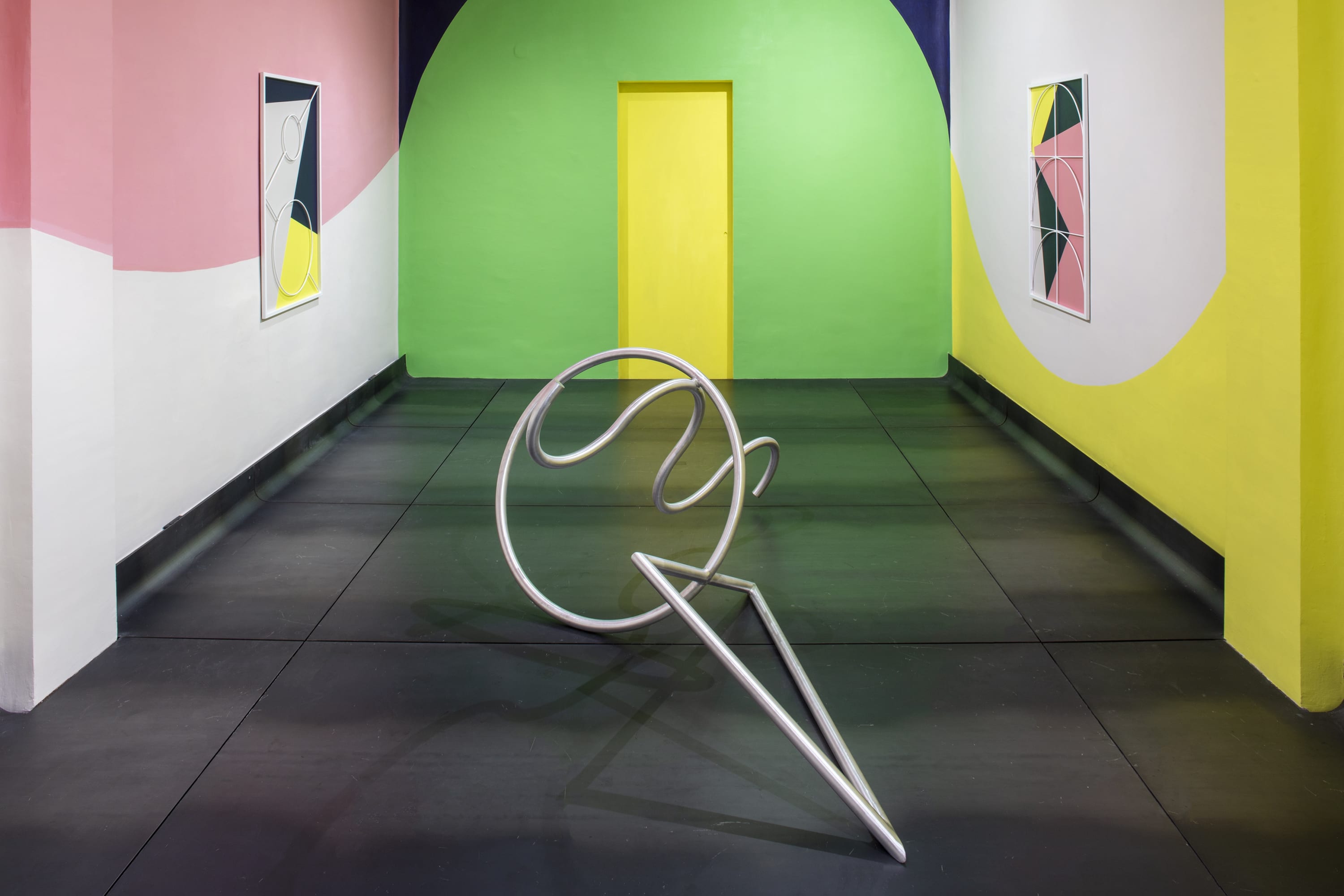Campeche presents Dispositivos Para La Memoria, an exhibition by Polish artist Przemek Pyszczek, presenting his work for the first time in Mexico in a solo show. The exhibition includes a large- scale mural that spans across the interior of the gallery, along with a series of mixed-media paintings and a central sculpture.
For his exhibiton in Campeche, Pyszczek created a set of works that make up contained landscapes, with the intention of generating a space for memory—his own and of those who visit the gallery. “In Mexico there is a predominance of colorful murals and old graphics, as well as old parks with playgrounds. I hope people feel connected to the pieces in some way.” Known for his exploration of Soviet and post-Soviet architecture, and the reinterpretation of urban landscapes, Pyszczek opens a discourse between the architecture of his native Poland, with the modernist influences of Mexico City.
-
-
-
Beyond the colossally of these developments, Pyszczek is drawn to the colors and graphic elements that post-Soviet governments used to rejuvenate these massive gray concrete buildings —in an attempt to erase traces of the communist era through color. For years, Pyszczek documented these Polish urban landscapes, eventually reinterpreting them through geometric figures, color blocks, and industrial materials in his paintings and sculptures. The paintings exhibited in Campeche are part of what Pyszczek calls abstract landscapes, which serve as a memoryscape that allows him to reconcile his memories of Canada and what he perhaps lacked living away from Poland. For him, creating these bodies of work allows him to move away from nostalgia; creating an exercise of distance between the experience and the memory of the experience, between the real and the unreal.
Today, the armed conflict between Ukraine and Russia, his residences in Berlin, and rural western Poland, a place that bears the scars of war, reminds Pyszczek how ephemeral architecture and the places we inhabit are. “It’s really interesting in my region in Poland, because they didn’t put so much effort and money into rejuvenating that area after World War II because they always thought that it would be taken away again... and now, maybe that could actually happen...”
-

-
Playground Structure (Fluid Metal), 2022
Brushed aluminium
94 x 202 x 187 cm
37 x 79 1/2 x 73 5/8 in
-
-
 Photo by Paul Green for Artsy.
Photo by Paul Green for Artsy. -
Image credits: Artworks ©2022 Przemek Pyszczek installation images ©2022 Ramiro Chaves @whitebalancemx















